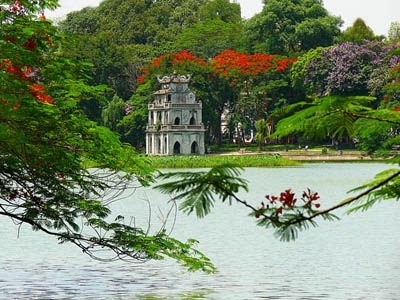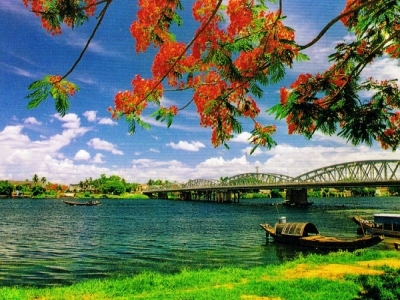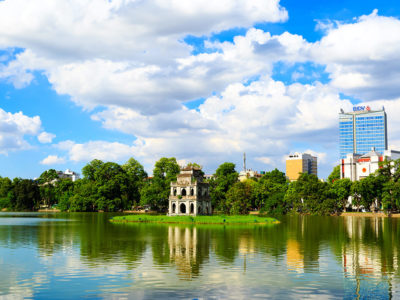Vietnam Travel Tips: What You Need To Know
A tour to Vietnam can be one of the most life-changing and rewarding adventures for travelers, but also one of the most challenging. Making the best out of your visit is just a matter of knowing the tricks, and there’s certainly no better way to learn the ropes than to hear it from the locals.
As a team that calls Hanoi home, we at Danh Nam Travel know the tips and tricks to make the best of a trip to Vietnam. From the nitty gritty technical tips to the best-kept cultural secrets, these are the things you need to know before heading East.
Visa or no visa?
Most that come to Vietnam are required to have a visa before they arrive in the country. However, there are some countries which can enter the country sans-visa for certain periods of time. Those countries are:
30 day visit: Cambodia, Laos, Singapore, Indonesia, Malaysia and Thailand
21 day visit: Philippines
15 day visit: Brunei, Denmark, Norway, South Korea, Finland, Russia, Sweden, Japan and recently Spain, Germany, United Kingdom, France and Italy
Other countries are required to get a visa before arriving in Vietnam. The process is simple, but does require some planning ahead of time. There are a few ways to go about getting a visa for Vietnam…
Option 1: You can apply for a visa at the Vietnamese embassy in your country. Each country’s requirements will vary slightly, so be sure to check the visa application procedure with the embassy beforehand – and leave enough time to get everything completed before your trip. A few weeks prior will usually leave enough time for paperwork to be processed before a flight.
Option 2: You can get a visa on arrival in Vietnam as long as you have pre-registered before travelling. This can be done via a travel agency, and you will only need to fill in a form (and pay a small fee). After providing them with the information they need, they’ll either mail or email you an invitation letter. Be sure to take this letter with you as you may be denied boarding if you do not have a copy! When you arrive into the country you will be able to pay for your visa and have the document issued.
What to Pack
Depending on the time of year and which region you’re visiting, your clothing needs will vary. Ho Chi Minh City is hot all year round, while Hanoi is hot in the summer but cool in autumn and winter. Summer time in the north and in the south year-round, the most comfortable clothing option is light, loose clothing and sandals. In the north, winter requires heavier and warmer clothes, since it can get rather cold. Go for layers that can be shed when walking into heated rooms, but will retain heat while outside in the damp and cooler weather.
It is not compulsory to wear clothes that cover your shoulders and knees when visiting temples and pagodas as it is in Thailand, but it is advisable to wear polite clothes. Stay away from torn shorts and low necklines to avoid turning too many heads in religious and cultural monuments and sites.
Prepare a small bag for storage of your passport and cash. You shouldn’t leave them in the hotel room, but most hotels do have a safe where you can store things during your stay. Many bags that can be tied around the hips are most secure, and it’s best to avoid bags that have short straps that only go over one shoulder. Cross-body bags are a great way to keep things secure, but make sure they have a way to zip or pin them closed.
If you are taking a domestic flight inside Vietnam with a budget airline such as VietJet Air or Jetstar Pacific, you need to pay extra for check-in luggage as it is not included in the airfare. Vietnam Airlines allows you to travel with 20kg of check-in which has been included in the airfare, but double-check your luggage allowance just in case.
Getting Around a City
In most cities such as Hanoi, Ho Chi Minh City or Hoi An, walking is the best way to get around, but some longer journeys require a little help. Before setting off, you’ll need to know a bit about each mode of transportation, and how to use it wisely.
Known locally as xe oms (pronounced say ohms), these motorbike taxis are available nearly everywhere in Vietnam and can also be very convenient for short or moderately long distances. Agreeing on a price beforehand will help you avoid awkward arguments after arriving at your destination, and is easily done with a smile and some hand signals. There’s plenty to know about motorbike taxi etiquette in Vietnam, so check out our blog dedicated solely to xe om skills.
This is only a good option if you’re already familiar with how to drive a scooter. Although this is not advisable due to the chaotic traffic in Hanoi and Ho Chi Minh City, many travelers find this a fun and memorable experience. If you’re up for the risk, make sure to invest in a good helmet and drive slowly.
Taxi fares are still pretty cheap in Vietnam. Make sure to tell the drivers to turn the meter on. If they don’t, ask to pull over to find another taxi, and don’t agree on prices beforehand. The meter price will usually be cheaper than you think.
Getting Around Vietnam
When traveling longer distances, opting for flights and trains are best to save money and stay comfortable. Within the country, they’re generally affordable, too.
Buses and cars are great for shorter distances, especially when traveling from from Hanoi to Halong Bay, from Da Nang to Hue, or from Ho Chi Minh City to the Mekong Delta.
Many adventurous travelers challenge themselves by riding motorbikes in rural areas between bigger cities, but as roads in some regions can be in a poor state of repair. It is not advisable to travel by motorbikes from one city to another, and usually aren’t worth the hassle anyway.
Shopping
Shopping in open markets in Vietnam is more popular than in malls as Vietnam has markets everywhere. These are great places to stock up on smaller trinkets and souvenirs, as well as some cheaper clothing. Keep an eye out for boutique shops as well, which are usually in close proximity to similar shops, too. Plenty of hidden gems can be found in smaller shops owned by locals.
Bargaining is allowed when buying at shops or in the market, where prices are rarely marked. Don’t try to haggle in shopping malls, though, where prices are fixed. Phones and calculators are very helpful when bargaining, as many shop keeps cannot speak English fluently enough to do so in anything except Vietnamese. A little known local tip – shopkeepers in Vietnam believe it’s bad luck to lose a first sale of the day, which makes them less likely to bargain. Try shopping for souvenirs later in the day, when they’re more happy to negotiate.
Heading out early and checking out local food markets are a great way to get fresh produce for breakfast, while also experiencing the early morning culture of the city.
Keeping in Touch
You can purchase a Vietnamese SIM card to use with your mobile phone. The major mobile providers in Vietnam are VinaPhone, Mobifone and Viettel. Prepaid sim cards can be purchased in convenience stores or phone shops, but make sure to ask the sellers to activate the SIM card to be able to call internationally.
Wifi is available everywhere in major cities in Vietnam. Most cafes, restaurants, hotels have free Wifi, so simply asking for the password to connect with your devices requires just a small purchase of coffee or tea.
Exchange Rates
Vietnam currency is Dong, or VND as most call it. 1 USD is equivalent to 21,000 VND, 1 Euro is equivalent to 28,000 VND, and 1 GBP is equivalent to 32,000 VND. Most smart phones have apps to quickly convert rates with the click of a button, which makes bargaining and financial planning much easier.
Do’s and Don’ts
– Pointing your finger is seen as offensive. Try to gesture using your whole hand instead.
– Public displays of affection are generally not as common in Vietnam, so avoiding it can save you some unwanted attention.
– Shoes are strictly outdoor wear in Vietnam, and you’ll be expected to remove your shoes for homes, pagodas and temples.
– Nude sunbathing is considered inappropriate, even on beaches, so avoid it completely.
– It’s considered improper to pat children on the head. A smile will do just fine.
– Don’t leave chopsticks sitting vertically in a rice bowl, as this resembles the incense sticks that are burned for the dead.
– When passing money or objects to someone, it’s polite to use both hands. Try to avoid passing with only your left hand, and use your right hand instead.
– Always avoid giving money to begging children.
– Remove your hat when entering a religious site, addressing the elderly or encountering esteemed people such as monks.
Other Article:
- Laos Travel Tips:Top 10 Must-See Destinations in Laos
- Cambodia Travel Tips: Top 10 Attractions in Cambodia
- Vietnam Travel Tips: 5 Reasons You Should Visit Cu Chi Tunnels
- Laos Travel Tips: Visit Laos' 8 Most Unique Wats & Pagodas
- Cambodia Travel Tips: 5 (More) Things to See and Do in Siem Reap
- Laos Travel Tips: A Day in the Life of a Novice Monk in Laos
- Vietnam Travel Tips: Expert Travel Guide for Northern Vietnam
- Vietnam Travel Tips: Life Along the Mekong - The Cham Village
- Vietnam Travel Tips: A Beginner's Guide to Vietnam's National Day
- Laos Travel Tips: 7 Things to Do in Vientiane
- Laos Travel Tips: 5 Best Restaurants in Luang Prabang
- Cambodia Travel Tips: Top 10 Temples In Cambodia
- Cambodia Travel Tips: Making the Most of the Angkor Temples





